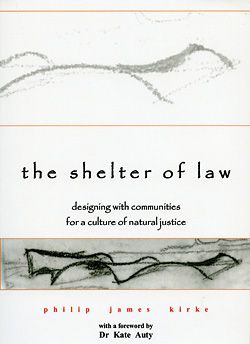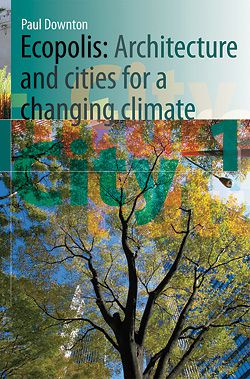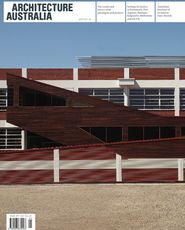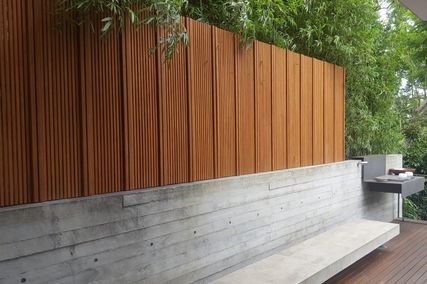The Shelter of Law: Designing with communities for a culture of Natural Justice

Philip Kirke. Friend Books, 2009. 177pp. RRP $36.
Aboriginal peoples have been informally participating in sentencing procedures in remote communities for considerable time. The formalization and spread of Indigenous courts has occurred across most Australian jurisdictions from a relatively unpretentious initiative in 1999 when a South Australian magistrate perceived the need for more culturally appropriate court settings for urban Aboriginal peoples. Although different Australian jurisdictions have developed and adopted various models for Indigenous courts, there are some commonalities. The specialist courts have generally developed within the paradigm of therapeutic jurisprudence with the overall aim of reducing the number of Aboriginal and Torres Strait Islander peoples entering the prison system as per the intent of the final report of the Royal Commission into Aboriginal Deaths in Custody.
Although the importance of the spatial setting has been long recognized by both the legal profession and Aboriginal users, very little has been written on designing Indigenous court settings. It is becoming increasingly common for briefs for court design projects to ask designers to address the specific needs of Aboriginal and Torres Strait Islander users. Philip Kirke’s book is a much needed work on an under-researched topic. The book’s foreword is written by Dr Kate Auty, a magistrate for the Western Desert and Goldfields Region of Western Australia and the first Koori Court Magistrate at Victoria’s inaugural Koori Court, who stresses the importance of “doing” justice better in cross-cultural contexts.
The author, a practitioner of considerable experience, brings together his design knowledge working on courts projects, his work from the first Australian Indigenous Courts conference and working sessions with the World Bank on the design of Indigenous courts in this modest volume. The book provides brief historical overviews on the development of Australian Indigenous courts and presents some valuable design principles for consideration. Given that design for this context is in its relative infancy, the presentation of the Kalgoorlie courthouse design project as a case study is very valuable. At the same time, while not claiming to be an academic text, this volume may have benefited from drawing on more recent discourses from the field of Indigenous architecture and placemaking. The work progresses knowledge and promotes discourse of the architectural processes for consideration within the design of Australian Aboriginal courts and should appeal to a range of audiences.
Dr Elizabeth Grant
Ecopolis: Architecture and cities for a changing climate

Dr Paul F. Downton. Springer and CSIRO Publishing, 2009. 608pp. $130.
Ecopolis is part of Springer’s “Future City” series, which draws on all the disciplines that contribute to thinking about contemporary urban development.
Dr Paul Downton is a past academic and practising architect. Although based in Adelaide, South Australia, his practice extends beyond individual projects to “city making” scale commissions elsewhere in Australia and overseas.
The book records his own evolution in thinking about ecological theory as applied to urban development and includes summaries of a number of implementation prototypes from his practice. However, it also extends beyond his own practice – a succession of chapters bring together crisp summaries of the attempts from the past to codify good urban development, from early Western civilization onward. The emphasis is on mid-twentieth-century commentators, who provide the foundations for current thinking.
The sources extend beyond urban development professionals to encompass social, political and economic sources. This demonstrates the connectedness of built artefacts, the processes of their creation and the results they achieve in terms of human experience. This approach makes biological processes integral to urban development thinking, which traditionally is “bricks and mortar” focused.
The beginnings of “ecopolis” as a term in the 1980s for ecological urban development is credited to a number of centres in the East and West at about the same time, and they continue to influence one another.
The text also teases out practitioners at local and regional levels in disparate places, and brings us exemplars of such thinking being made manifest. Some will be known “heroes” of the professions (Frank Lloyd Wright), some “villains” (Biosphere2) and others not widely recognized.
Among the process precedents, pattern language, permaculture, Gaia and community architecture are all brought under the ecopolis umbrella.
The book’s reviews of these precedents are not euphoric – projects are credited where appropriate, and admonished where additional scope or rigour would, in the author’s view, make them more complete.
The book Ecopolis should itself be seen in this light. It is a statement, at the beginning of the twenty-first century, on where along the continuum of exploration and evolution the art at present is positioned. It is about the human propensity to make deliberate living spaces, and how well they serve us. The book includes both a bibliography and an index to help the reader dip into this text and to go onward to other sources when pursuing a particular thought.
Emilis Prelgauskas















